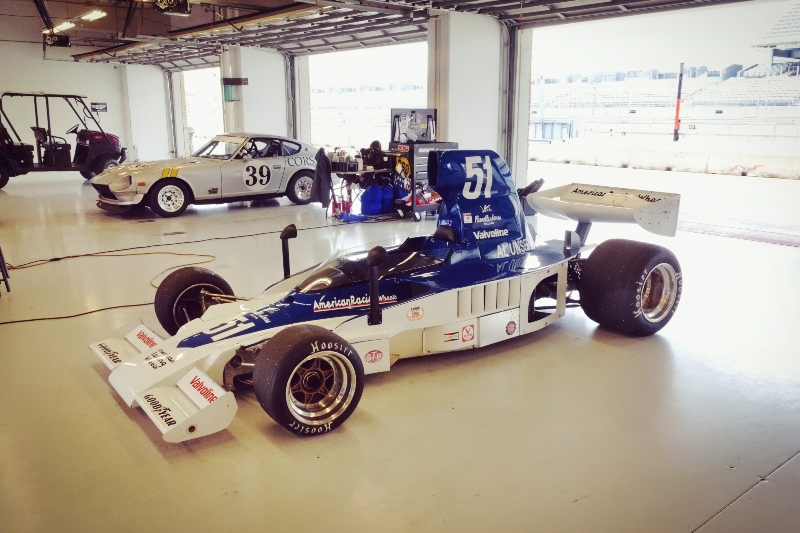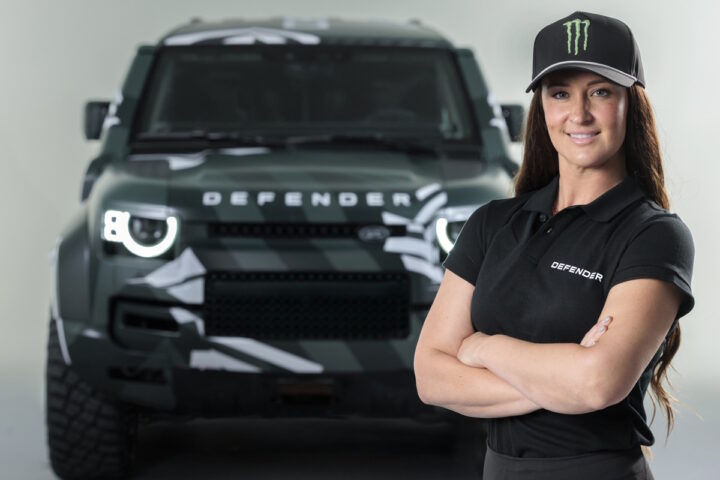by Michael Satterfield – 03/15/2022
You’ve always wanted to be behind the wheel of a race car, not just doing a driving experience or a track day event, but a licensed racing driver chasing an actual trophy. But if you aren’t from a family of racing drivers, knowing where to get started in the world of amateur motorsports can overwhelming. The best place to start is to determine what kind of racing you are wanting to do, road racing, oval racing, drag racing, off-road racing, or rally.
No matter what kind of racing you are interested in, if you want to race wheel-to-wheel, you are going to need a license. Researching what the licensing requirements are for your preferred racing discipline is fairly straightforward as most sanctioning bodies have their licensing requirements published online. Most races are sanctioned by racing organizations regionally, even national organizations generally are divided into smaller regions. Take for example the Sports Car Club of America (SCCA), they are divided into eight major regions with states like Texas composed of six smaller regions within the state. The club should have a regional director and staff that can help you find the right driving school for licensing.
Budget is a big thing to consider when you are getting into racing, even in the highest levels of motorsports many drivers are “Pay Drivers” who simply write a check for their seat. Sponsorship is generally hard to come by and while you might be dreaming of driving a GT4 car or Formula 1, Spec Miata or Formula Vee might be more realistic. Even Spec Miata, one of the most affordable and popular programs, cars can cost upwards of $60,000 to build, however, good used cars can be found for between $15,000-$30,000.
In this guide, I will take you through the basics you need to know to get behind the wheel, find the right gear, and start shopping for your first race car. While many people like to claim that motorsports are dead in the USA, the number of clubs and sanctioning bodies would suggest otherwise. The first step is determining what kind of racing you want to do and what club/sanctioning body you need to contact, below is a list of the active racing organizations in the USA.
Racing Sanctioning Bodies in the United States:
Drag Racing:
- American Hot Rod Association
- International Hot Rod Association
- National Drag Racing Association
- National Hot Rod Association
- National Muscle Car Association
- Texas Drag Racing Association
Land Speed Racing:
- East Coast Timing Association
- Southern California Timing Association
- Utah Salt Flats Racing Association
Off-Road Racing:
- Best In The Desert Racing Association
- Bonneville Offroad Racing
- Championship Off-Road
- Great American Shortcourse
- Jeepspeed Race Series
- National Off-Road Racing Association
- SCORE International Off-Road Racing
- Southern Nevada Off-Road Enthusiasts
- Texas Off-Road Racing Association
- Unlimited 4 Wheel Drive Racing
Open Wheel Racing:
Sports Car Racing:
- BMW Car Club of America Club Racing
- ChampCar Endurance Series
- Ginetta Challenge
- GT Celebration
- Grid Life Touring Cup
- International Conference of Sports Car Clubs
- International Motor Sports Association
- Midwestern Council of Sports Car Clubs
- National Auto Sport Association
- Radical Sports Cars
- Redline Time Attack
- Sports Car Club of America
Stock Car | Oval Track Racing:
- American Muscle Car Masters
- Automobile Racing Club of America
- Champion Racing Association
- International Motor Contest Association
- International Supermodified Association
- Mid-American Racing Series
- Modified Racing Series
- National Association for Stock Car Auto Racing
- United States Racing Club
- World of Outlaws
Vintage Racing:
- Classic Sports Racing Group
- Corinthian Vintage Auto Racing
- Formula Jr. Historic North America
- Gateway Vintage Racing Association
- Good Ol’ Time Racing Association
- Heartland Vintage Racing
- Historic Motor Sports Association
- Historic Sportscar Racing
- National Vintage Racing Association
- New England Antique Racers
- Pittsburgh Vintage Grand Prix Association
- Put-In-Bay Road Race Reunion
- Rocky Mountain Vintage Racing
- Short-Course Off-Road Drivers Association
- Society of Vintage Racing Enthusiasts
- Southwest Motor Sports
- Sportscar Vintage Racing Association
- Vintage Auto Racing Association
- Vintage Drag Racing Association
- Vintage Drivers Club of America
- Vintage Racer Group
- Vintage Sports Car Club of America
- Vintage Sports Car Drivers Association
- Vintage Sports Car Racing
- Vintage Stock Car Racing
- Wicked Good Vintage Racing Association
How To Get Your Racing License:
So now that you have decided what kind of racing you are going to do, it is time to get licensed. Many sanctioning bodies require a medical exam, a driver’s school, and grant a provisional license until you have a few safe races under your belt. The larger series often have more requirements, however, if you do some research you will find that most sanctioning bodies will accept licenses from other racing organizations, so getting your license with one series will make it much easier if you transition to another. This doesn’t usually translate between different types of racing, so your drag racing license won’t carry much weight with a road racing club.
For road racing, SCCA and NASA have the largest network of racing schools, but many smaller clubs hold their own schools at least once a year. If you haven’t purchased your car yet, you can always attend a school that offers car rental or rent a car from another party. Schools like Skip Barber and Radford can get your licensing done in just a few days and are accepted by most racing clubs and associations. Just be sure to get the optional insurance if you are renting. Most schools are a few days and can be done all at once or over the course of a few events.
For drag racing, licensing is a lot easier, simply got to your local NHRA certified track and let them know you would like to get your license and will then arrange for two currently licensed drivers of equal or a higher class to observe your runs and sign off that you are doing so safely. With a clear medial and your licensing fee paid, you will be an NHRA licensed drag racer and eligible to race in your class or equivalent at nearly all US drag strips. Most drivers start with a lower class and work their way up through the Sportsman series.
Outside of drag racing and off-road racing, most other forms of racing including Stock Car or Vintage racing follow SCCA and NASA guidance for safety and licensing. Stock Car series American Muscle Car Masters, for example, requires drivers to have a current NASA competition license.
Once you have completed ‘school’ you will be issued a Novice Permit or a Provisional License, to get a full Competition License you will need to complete a few races with the sanctioning body and race in a safe and professional manner. Some licensing programs, like NASA’s, use what they call a “High-Performance Driving Event Ladder,” where you’ll take part in different events and the instructor will sign off as your skill level is demonstrated. Once your instructor fully signs off on your ability, you will be issued a Provisional License. So look into the licensing requirements of the different sanctioning bodies and choose the one you think will work best for you.
Expect to spend at least $800 in membership fees, track time, and your visit to the doctor to get your license. Depending on the program it can take you several weeks to complete. If you just can’t wait and you really want to get your license, successfully graduating from an approved racing school can get your SCCA license in just a few days. As someone who has done several different schools, I would highly recommend you attend one. Racing school isn’t cheap, so be prepared to spend upwards of $6,000 to take the shortcut.
Gearing Up:
You’ve got your license, you have a ride, but now you need to make sure that you have all the right safety gear for your sanctioning body. While most clubs use the SCCA’s safety requirements as a guide, it is always a good choice to carefully review the rules for your specific series. You might be tempted to buy some used gear, and there is nothing wrong with shopping for a deal, but if you do buy used pay close attention to the dates.
Helmets must be certified by Snell, FIA, or SFI standards, in addition, some tracks require specific helmet certification, these certifications are updated often. Recently the SCCA removed Economic Commission for Europe (ECE) rated helmets from their list of approved ratings due to a change in labeling requirements. Buying the wrong helmet can be a costly mistake. Brands like Racequip, Conquer, and G-Force offer inexpensive certified helmets, but even well-known brands like Simpson and Bell have lower-cost options. Like anything else buy the best equipment you can afford.
Just like your helmet, your racing suit, shoes, Nomex socks, balaclava, gloves, harness, and even fire system all come with tags that have dates and ratings, so check that what you are buying is approved by your sanctioning body. Also, some suit ratings require you also buy Nomex underwear. Thanks to marketplace competition, prices on safety equipment have come down, but be sure to budget at least $1,000 for basic safety gear, if you want major name brand gear bring $3,000-$5,000. I personally like the fit of the OMP and Sparco suits, but brands like RaceQuip offer SFI 3-2A/5 rated suits starting at under $300.
Shopping For Your First Race Car:




























